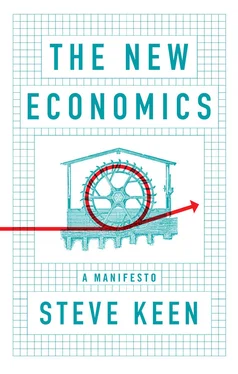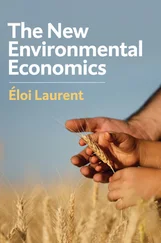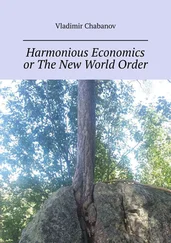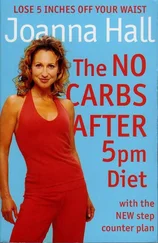4 Chapter 6 Figure 6.1.Simple population growth as an integral equation in Minsky . See http://ww...
1 Cover
2 Table of Contents
3 Begin Reading
1 iii
2 iv
3 vi
4 vii
5 viii
6 ix
7 x
8 1
9 2
10 3
11 4
12 5
13 6
14 7
15 8
16 9
17 10
18 11
19 12
20 13
21 14
22 15
23 16
24 17
25 18
26 19
27 20
28 21
29 22
30 23
31 24
32 25
33 26
34 27
35 28
36 29
37 30
38 31
39 32
40 33
41 34
42 35
43 36
44 37
45 38
46 39
47 40
48 41
49 42
50 43
51 44
52 45
53 46
54 47
55 48
56 49
57 50
58 51
59 52
60 53
61 54
62 55
63 56
64 57
65 58
66 59
67 60
68 61
69 62
70 63
71 64
72 65
73 66
74 67
75 68
76 69
77 70
78 71
79 72
80 73
81 74
82 75
83 76
84 77
85 78
86 79
87 80
88 81
89 82
90 83
91 84
92 85
93 86
94 87
95 88
96 89
97 90
98 91
99 92
100 93
101 94
102 95
103 96
104 97
105 98
106 99
107 100
108 101
109 102
110 103
111 104
112 105
113 106
114 107
115 108
116 109
117 110
118 111
119 112
120 113
121 114
122 115
123 116
124 117
125 118
126 119
127 120
128 121
129 122
130 123
131 124
132 125
133 126
134 127
135 128
136 129
137 130
138 131
139 132
140 133
141 134
142 135
143 136
144 137
145 138
146 139
147 140
148 141
149 142
150 143
151 144
152 145
153 146
154 147
155 148
156 149
157 150
158 151
159 152
160 153
161 154
162 155
163 168
164 169
165 170
166 171
167 172
168 173
169 174
170 175
171 176
172 177
173 178
174 179
175 180
176 181
177 182
178 183
179 184
180 185
181 186
182 187
183 188
184 189
185 190
186 191
187 192
188 193
189 194
190 195
191 196
192 197
193 198
194 199
195 200
196 201
197 202
198 203
199 204
200 205
201 206
202 207
203 208
204 209
205 210
206 211
The New Economics
A Manifesto
Steve Keen
polity
Copyright © Steve Keen 2022
The right of Steve Keen to be identified as Author of this Work has been asserted in accordance with the UK Copyright, Designs and Patents Act 1988.
First published in 2022 by Polity Press
Polity Press
65 Bridge Street
Cambridge CB2 1UR, UK
Polity Press
101 Station Landing
Suite 300
Medford, MA 02155, USA
All rights reserved. Except for the quotation of short passages for the purpose of criticism and review, no part of this publication may be reproduced, stored in a retrieval system or transmitted, in any form or by any means, electronic, mechanical, photocopying, recording or otherwise, without the prior permission of the publisher.
ISBN-13: 978-1-5095-4528-5
ISBN-13: 978-1-5095-4529-2 (pb)
A catalogue record for this book is available from the British Library.
by Fakenham Prepress Solutions, Fakenham, Norfolk NR21 8NL
The publisher has used its best endeavours to ensure that the URLs for external websites referred to in this book are correct and active at the time of going to press. However, the publisher has no responsibility for the websites and can make no guarantee that a site will remain live or that the content is or will remain appropriate.
Every effort has been made to trace all copyright holders, but if any have been overlooked the publisher will be pleased to include any necessary credits in any subsequent reprint or edition.
For further information on Polity, visit our website: politybooks.com
Figures and tables
Figures
2.1.Money enables the butter maker to buy a gun without the gun maker having to want butter
2.2.The State as the conduit for fiat money transfers where money is the State’s liability and physical gold its asset
2.3.Modelling the initiation of a monetary economy in Minsky
2.4.Growth of coins and the economy from an initial minting of 1,000 coins
2.5. The fundamental monetary operations of the government
2.6. US government debt and deficits over the past 120 years
2.7. US unemployment and inflation 1960–1990
2.8. The relationship between credit and unemployment
2.9. Private debt and credit in the USA since 1834
2.10. The banking sector’s view of a mixed fiat-credit economy
2.11. An integrated view of government deficits and private sector credit
2.12. Margin debt and the stock market’s cyclically-adjusted price-to-earnings ratio (CAPE) since 1910
2.13. Accounting for a Modern Debt Jubilee
2.14. Change in household credit and change in house prices (correlation 0.64)
3.1. The cyclical interaction of grass and cows
3.2. A predator-prey model in Minsky , using sharks and fish
3.3. Lorenz’s model of aperiodic cycles in the weather
3.4. The Keen-Minsky model and the ‘intermittent route to chaos’
3.5. Declining cycles in employment and inflation, while private debt rises
4.1. The basic principle of a heat engine: Work can be done if T H> T C
4.2. The correlation between change in global energy consumption and change in global GDP is 0.83
4.3. A simple energy-based model with resource depletion and waste production
4.4. Estimates of the total impact of climate change plotted against the assumed climate change
6.1. Simple population growth as an integral equation in Minsky
2.1. Economic performance of major periods in post-Second World War USA
2.2. A Moore Table showing expenditure IS income for a three-sector economy
2.3. The Moore Table for Loanable Funds
2.4. The Moore Table for bank-originated money and debt
2.5. Magnitude of credit and duration of negative credit in the USA’s major economic crises
4.1. Extract from Nordhaus’s table 5: breakdown of economic activity by vulnerability to climatic change in 1991 US$ terms
Dedicated to my wife Nisa, whose Buddhist grounding in the present keeps me sane as I contemplate the future facing both humanity, and the biosphere that humanity has so severely damaged .
Even before the Covid-19 crisis began, the global economy was not in good shape, and neither was economic theory. The biggest economic crisis since the Great Depression began late in the first decade of the twenty-first century. Called the ‘Global Financial Crisis’ (GFC) in most of the world, and the ‘Great Recession’ in the United States, it saw unemployment explode from 4.6 per cent of the US workforce in early 2007 to 10 per cent in late 2009. The S&P500 stock market index, which had boomed from under 800 points in 2002 to over 1,500 in mid-2007, crashed to under 750 by early 2009. Inflation of 5.6 per cent in mid-2008 turned into deflation of 2 per cent in mid-2009.
Читать дальше












